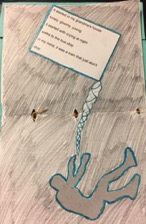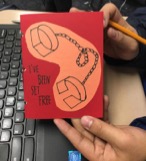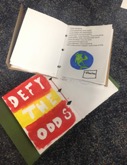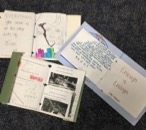Book It!
By Scott Glass
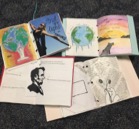
This project took place at Glenbrook South High School, in Glenview, Il. Students who participated in the project are all juniors in a standard level English. The focus of the class is American Literature. The learning community is comprised of a fairly diverse group of 25 students. The standard level tends to have a wide variety of ability levels and interests. Students are required to take the class and tend to see it that way: as an obligation to graduate. Most of the students did not have experience in talking deeply about art or participating in an artistic practice.
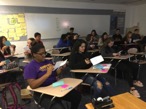
American Literature examines how writers, artists, thinkers, and everyday Americans have reflected on key American myths and ideals. But it is not just about what they say. It is also about the way in which they say it: What creative mediums they employ to ask questions and convey ideas. Instead of simply learning about the processes of writers and artists, students will use these writers and artists as models as they actively participate in an artistic process by crafting their own chapbooks (small paperback booklets). The chapbooks will blend original and appropriated writing and imagery. Throughout the creation of the chapbooks, students will cultivate a daily practice of questioning, thinking, and making.
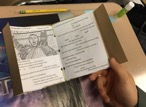
Project Overview
The project consists of a number of steps, some of which students engage in simultaneously. At the outset of the project, students considered essential questions about freedom and self-invention while also experimenting with simple visual techniques. These conversations and exercises filled the first four to six weeks, during which time students were shown how to make a simple book. The early pages grew out of our work with poets like Kevin Coval. As they read and discussed his work in A People’s History of Chicago, students crafted poems employing his style and played with ways to incorporate them in their books. This first book was considered practice so that students felt open to trying techniques without being concerned with assessments. It is essential to provide many examples of what can occupy the pages of the book.
After six weeks of practice, students got new bookmaking materials, and constructed their second books. These were the books that students would ultimately hand in for summative assessment, and students worked on them for roughly nine weeks. A main component of the book was a research poem based on a contemporary or historical person of their choice. These poems were based on the work by Kevin Coval in his book, A People’s History of Chicago. Reading his poems, we could see the way they worked as art regarding poetic techniques, but also how dependent they were on research and telling a history in a different way. Additional requirements for their twelve-page books included a cover with a title, the inclusion of visual design, and an epigraph. Students decided how many pages to use for their poems and furthered their sense of ownership by fully determining what would make up the remaining pages of the book. With this in mind, we brainstormed a “could have list” from which students could draw inspiration. For example, students could write haiku or short poetry based on a found image, engage in some blackout poetry or found poetry, or illustrate a favorite statement using a stencil or template.
To assess our work, students signed up for a day by which they would have their book completed. The student shared the book with me and with the classmates who also signed up for that day. In addition to their books, students completed a self-assessment regarding the content of their books, their craftsmanship, and their work ethic. On their due date, small groups of 3-5 students discussed the experience of making the chapbooks, using their self-assessments as a guide. The meetings were successful. Only two students missed their due date. It was enlightening to hear students talk about their favorite pages, as well as what they struggled with or wish they had done differently. Being in the small groups allowed some of the more reticent students to open up more, and they all were genuinely impressed with what their peers produced. While I tend to get excited by everything, students can be aloof and unmoved when it comes to expressing interest in . . . anything. So it gave me chills to hear them compliment each other and ask questions about how somebody managed to create a particular page. There was an energy to these conversations that I seldom hear when we are sharing other work, like our writing.
At the beginning of each meeting, I let students know that they would engage in one final act of creation: At the culmination of the meeting, they would each take a peer’s book and add a page. Their task was to create a page in response to an idea or question in their peer’s book that they found most energizing. For example, one student responded to the cover of her peer’s book, titled “Eclipse,” which showed a silhouette of the moon. On the page she added, she crafted a colorful drawing of a woman looking up at a moon and included the statement, “She was like the moon. Part of her was always hidden away.” The exchange of these response pages offered insight into possibilities for future collaborative texts beyond our classroom.
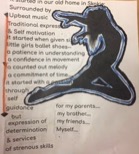

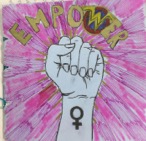
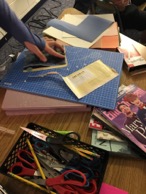

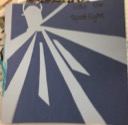
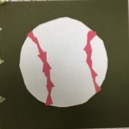
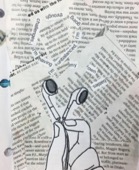
MCA Connections
Throughout this process, we examined works from the MCA’s collection—both to understand how contemporary artists handle concepts like freedom and individuality, and also to get inspiration for our own work. Students found Keith Obadike’s Blackness for Sale perplexing—initially because of the fact that this is called “art.” We spent some time discussing how art can be conceptual as well as physical or representational, and reflected on Obadike’s critical perspective on race and what blackness often represents in American culture. Additionally, it provided an interesting counterpoint to the play, Death of a Salesman, which asks us to consider the ways capitalism encourages us to sell ourselves and to value things monetarily above all else. Another artwork we discussed was Melanie Schiff’s Neil Young, Neil Young, which raised questions about the ways we use pop culture to define ourselves, about the changing ways in which we consume media, gender expectations, and what makes something a “self-portrait.” As we considered Schiff’s piece, we reflected on what objects we would choose to substitute for our own self-portraits, and we thought about the possible choices that would be made by characters from the books, stories, and films we read. For example, what would the vast cast of immigrant characters in The Book of Unknown Americans choose?
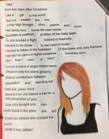
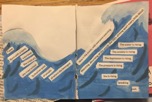
- I Was Raised on the Internet
- Picture Fiction: Kenneth Josephson and Contemporary Photography
- Keith Obadike’s Blackness for Sale
- Melanie Schiff’sNeil Young, Neil Young
- A People’s History of Chicago (assorted poems,) Kevin Coval
- The Versatile Art of the Silhouette (video resource)
- Designing with Black, White, and Gray (video resource)
- A 21st Century Reimagining of Norman Rockwell’s “Four Freedoms”
Scott Glass
Glenbrook South High School
About Scott Glass
Scott Glass has been teaching English and Humanities for more than 20 years, which means his career began before Google, before YouTube, before social media and the proliferation of digital tools most of us now carry around in our pockets. In his classroom, these developments have had a complicated legacy. While students now have more access to ideas, culture, and the means to create and share, many of them struggle to attend to the details of their lives, distrust their own curiosity, and devote much time to passive consumption. Unfortunately, these changes have coincided with the growing professionalization of childhood and an ever greater emphasis on grades and test scores in school. As a result, Glass now views his role as modeling for students the ways in which making art emphasizes principles that have been devalued in much of our culture: attention, intention, curiosity, and integrity. To this end, he loves to discuss with students literature, poetry, music, film, visual art, and the processes artists use to create in these fields. To share his own attempts to make art. To provide time and space in the classroom for students to experiment with their own creativity.
Scott Reflects on the Project
There were multiple “hallelujah moments” while embarking on this project, and they tended to coincide with obstacles. My biggest realization had to do with my tendency to see the chapbooks as too precious. It was difficult for me to get the project started because I kept feeling like the students were not ready. What this really amounted to, I realized, was my own faulty expectations for how good the first books needed to look. Of course, part of the artistic process is taking risks—trying, failing, but learning the whole time. Students need this. Maybe more than anything else. So much of their experience in school revolves around “getting it right.” To fail has drastic consequences for grades, grade point averages, academic standing, and even self-conception. To be invested in an artistic process means to be open to trying techniques, to developing skills, and to knowing that not everything will work out.
Another realization dealt with the way students approached making visual work. Interestingly, although many of them cannot draw well, they tend to want to draw everything. It took repeated conversations, many of them on a 1-1 basis, to get students to consider other approaches, like making templates, using stencils and tracing. Practically speaking, this resistance meant that I had to spend more time in class getting them to practice techniques, which had very real consequences for my curriculum overall. Happily, many students saw improvement in their work. As they put together their covers for Book #2, I saw more thoughtful approaches to incorporating visuals and exploring the relationship between images and text.
Bringing the project to a close proved to be a bit harder than I expected. Due to the ongoing, creative nature of the work, I struggled with setting a hard due date, and when I did establish due dates for a specific number of pages to be completed, there were always students who failed to meet those deadlines. Part of the issue was that this project was just one part of the class, which also included reading novels, engaging in activities around those novels, and working on writing. If I do this project again, I know I will have to be much more ruthless about what I remove from my curriculum.
